In last month’s Conference issue of the Ensign, (PDF complete–note it’s 6 MB) for the first time I can remember, the pictures were all in color. Not just the pictures of the speakers, but the candid shots of people in and around the Conference Center and Temple Square, and watching Conference in other parts of the world. I’ve always really enjoyed these candid pictures, and I appreciate the work of the photographers who I assume must take hundreds or thousands of pictures each April and October to be able to pull out and publish such fun and interesting ones. I’m going to miss the black and white format of the pictures, though. I don’t know the first thing about photography, but it does appear to me that black and white photographs can emphasize interesting patterns of light and dark in ways that are overwhelmed by different colors in color photographs.
So to bid a fond farewell to the era of black and white pictures in the Conference Ensign, here are a few of my favorites. (Unfortunately I couldn’t go back before 2001 because PDFs of those issues aren’t available online.) If you want to track down the issues in which any of these originally appeared, hover your cursor over it. The filename will pop up, and I included the year and month in the filename.
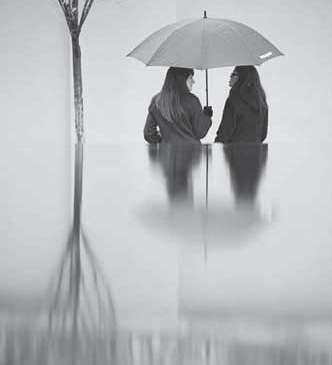
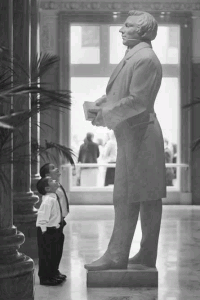
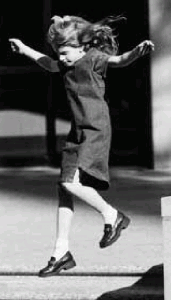
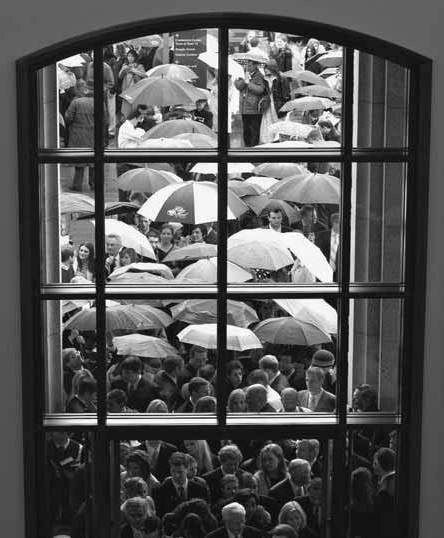
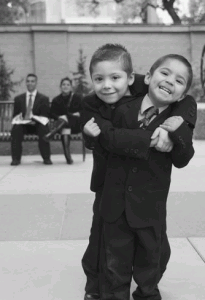
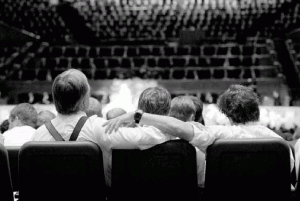
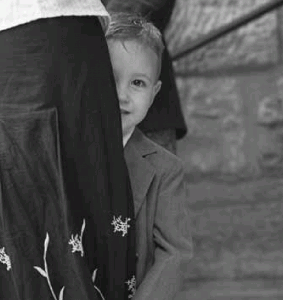

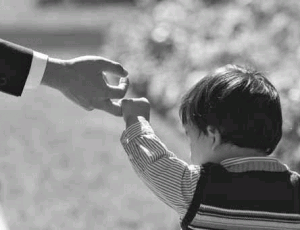
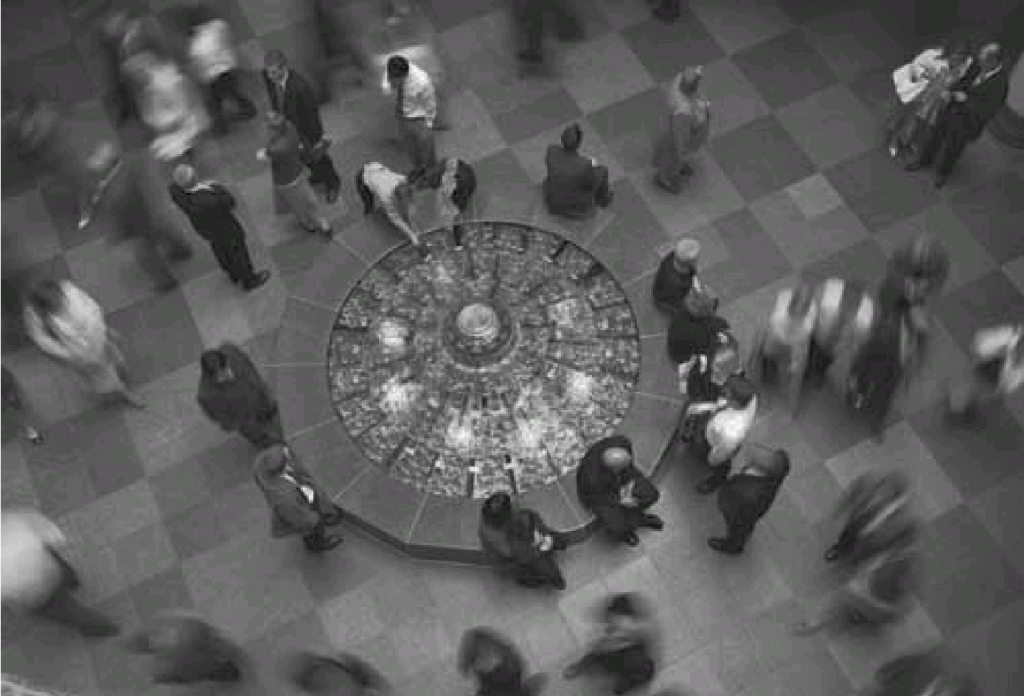


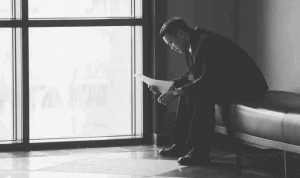
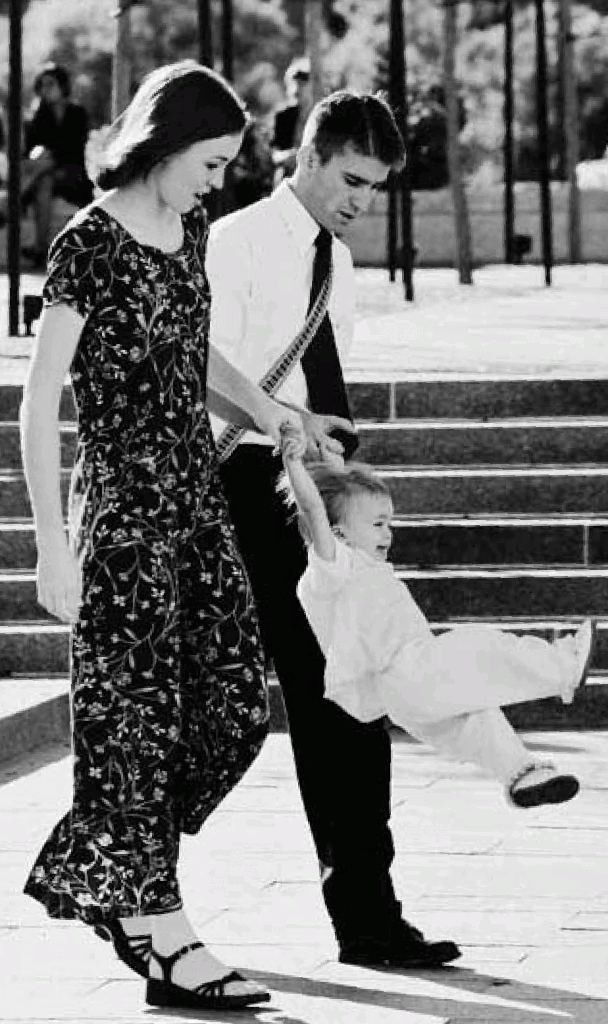
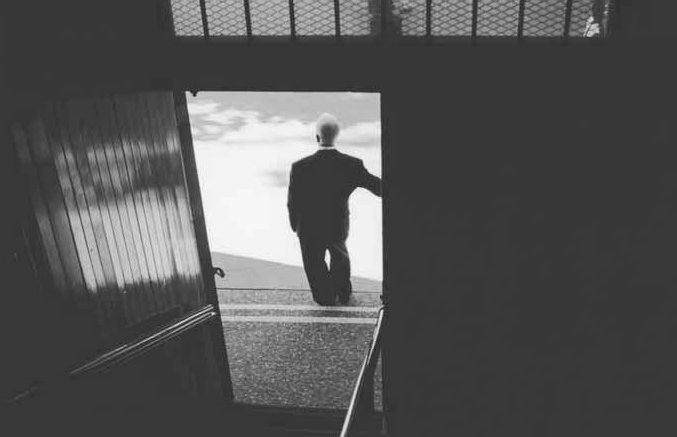
I really like the one with the people around the fountain. It’s cool how the focusing is working. (Or whatever the right terminology is.)
Thanks for posting these.
I think the black and white will come back sometime, don’t you?
As my mother was going blind, she could see and follow old black and white movies and TV shows much longer than she could follow the action in color shows.
I like the aesthetics of black and white, but I think there is something physiological to it, too — odd, since we don’t naturally see the world in black and white.
Great selection of pics, Ziff. I too am partial to the B&W.
Thanks for compiling the selection, Ziff!
I LOVE the two little boys staring at the statue of Joseph Smith. It’s so cute! Their eyes are just full of wonder and amazement!
Ardis, that’s a great question. I wonder if we like black and white for a reason related to why we like (sometimes) caricatures. Just like caricatures exaggerate what we typically see in very specific ways to bring out the highlights, black and white changes what we typically see in a specific way to bring out the contrast. So I expect that randomly altered pictures or drawings wouldn’t be that appealing, but because these approaches bring out things that we already see but make them clearer, we like them.
Really, I don’t have any good idea, though.
I hope that, in the future, the powers that be won’t take too black and white of an approach (yuck yuck yuck) and will be open to including both color and black and white pictures, depending on the aesthetics of each picture and the page they’re included in.
Photographers use black & white as a tool for telling a story. Some photos just work better as a B&W image vs. color. (There are also technical limitations too. Photos shot in especially dark places tend to work better in B&W. And printing photos sans color is obviously cheaper too.)
It’s all about what the artist is trying to say. B&W gives us less visual information to work with, so it can take away unnecessary distractions.
@Joseph Smidt
That effect is created by placing the camera on a tripod and making a longer exposure (think 1/10th of a second vs. 1/500th of a second).
Not knowing much about photography, all I can say is that these pictures are stunningly beautiful.
That’s all.